
The following is a transcript of a panel focussing on the work of writer/artist Randy Kingman, at Wrathocon II in Passaic, New Jersey, Sept. 21-22. Present are Kingman, and interviewer Vic Chalker.
VIC: Randy, it’s good to see you. I’d like to welcome you here on behalf of the Wrathocon Audience.
RANDY: Thank you, thank you.
VIC: Randy, of course, most people are familiar with your career. You started as artist on “Brickman,” working with noted writer Buck Grissom…
RANDY: Actually, I dislike the term “working with,” Vic. The relationship between writer and artist, in which the artist has to curb his own superb artistic impulses to suit the visually uninspired natterings of the “writer,” well…”working with” makes it sound like it’s something I readily agreed to, rather than a situation that I tolerated.
VIC: Well, how would you describe it?
RANDY: I would say I was “creatively indentured.”
VIC: That sounds brutal.
RANDY: Oh it is, it is.
VIC: You must have felt it liberating when the writer was fired, or quit–reports still differ–and you took over the series yourself.
RANDY: Well, it was a while in coming, but it was inevitable. I don’t mean to badmouth Buck, but, for example–he’d write pages of people just standing there and talking, y’know? Just talking. Now that’s not what the fans want to see. It’s certainly not what I want to draw. So I’d try to give it visual kick by turning those boring, chatty scenes into interesting pin-up pages. Or I’d stick in a fight scene. And Buck would crab about the pacing being screwed up, saying it’s not the story he wrote. And he’d complain to the editor, and the editor, he knows what side his bread is buttered on, y’know?
VIC: And now I understand you’re starting up a brand new title with orders already over twelve million for the six different editions. Tell us about it.
RANDY: You mean “The X-Cels.” Yes, that would be my series about a group of mutant cartoon characters who once were simple drawings on celluloid, but came to self-awareness and broke free of their restraints and now fight those who threaten freedom of imagination.
VIC: It sounds a bit autobiographical.
RANDY: You’re quick, Vic.
VIC: You’re writing and pencilling it?
RANDY: Writing, pencilling, inking, coloring and lettering. Let’s face it, the artist is what makes the book sing. Everyone else is just hired hands. That’s “artist” as opposed to “inker,” by the way. I’ve heard inkers refer to themselves as artists. They trace lines and they want to be called artists. Five-year-olds can trace lines.
VIC: Your chores on this title sound ambitious.
RANDY: Hey, the art is the tough part. I do that already. The rest of the stuff is a cakewalk.
VIC: We have a question from a young lady in the audience?
YOUNG LADY: Mr. Kingman, I just want to say that you’re a strikingly handsome individual.
RANDY: Why, thank you. You’ll notice that most artists are lean and good-looking. This is as opposed to most “writers” who are shorter and usually overweight. I imagine this physical jealousy is part of what prompts so many writers to be envious of artists. The fact is that, in every way, artists are better than writers. They can’t stand that. They’re old news. Fading history.
VIC: How would you account for this physical difference?
RANDY: Gravity. Writers sit there in front of their typewriters and sag while writing their recycled plots. Artists are taut and lean, stretched out over their drawing boards. Physical demands of the job. That’s what does it.
VIC: Could you tell us who some of your artistic influences are?
RANDY: Oh, lots of people have influenced me at various times. Russ Manning. Frank Frazetta. Steranko. Eisner. Burne Hogarth. Plus constant sketching from real life. Friends posing for me. That sort of thing.
VIC: And who are your writing influences?
RANDY: I’m sorry, what?
VIC: What writers have influenced your work?
RANDY: Well, writing is nothing special. Anyone can write. Why should some writer influence me? It’s art that’s important.
VIC: But…
RANDY: After all, you know what one picture is worth a thousand of, don’t you.
VIC: But you should have some knowledge and understanding of what other writers have done? I mean…what do you think of Hemingway’s writing?
RANDY: Which one wrote? Mariel or Margaux?
VIC: Let me put it another way…when you write a story…
RANDY: I don’t “write” a story. The story’s just there. I start drawing it.
VIC: Okay, how about, When you tell a story, what themes do you explore?
RANDY: You mean like music? TV themes?
VIC: Themes! Topics! Subject matter! What comments on the human condition are you trying to make? You know, the things that writers should be doing!
RANDY: But are writers doing that? Hëll no. It’s all recycled garbage. Yesterday’s stories in modern dress. Don’t tell me that comics writers are exploring…what’d you call it?…themes. They can’t even hum themes, much less explore them. They’re old, tired and used up. But artists have new, fresh ideas. Look at this advance copy of “X-Cels.” Each page brimming with vitality. Each page new and different.
VIC: It’s fight scenes.
RANDY: Yeah?
VIC: It’s twenty pages of fight scenes. And two pages of exposition, being told by women with their hips outthrust.
RANDY: Isn’t it great?
VIC: But comics writers are accused of rehashing. You said so yourself. What in the world is new and novel about fight scenes?
RANDY: Because they’re being drawn by people who have a grasp of how to tell things interestingly in a visual manner. Writers don’t.
VIC: They all look like pin-up pages.
RANDY: Right. Writers don’t care about important stuff like that because they don’t get art pages back. And they gripe about it and ignore the needs of the artists. It’s deliberate.
VIC: I’m not following. What do pin-up pages have to do with getting art pages back?
RANDY: It has everything to do with it. If I drew what those so-called “writers” wanted, with pages that had six, seven, even eight panels of people talking–or pages of fight scenes with smaller panels instead of big ones–those pages go for less than half of what pages with big images go for.
VIC: “Go for?”
RANDY: On the art market.
VIC: Wait a minute. You’re saying that when you create stories, one of your major concerns has to do with how much you can sell the pages of artwork for?
RANDY: Of course. Pages that have two or three images on them–preferably two or three small panels, combined with an extremely large image–usually a dynamic pose or a fight pose–those go for a couple of hundred bucks easy. Those look great up on walls. Those are genuine pin-up quality. But pages with small images of this character interaction garbage…those go for peanuts. Those don’t look good up on walls. That’s one of the reasons Buck quit off “Brickman.” I’d take his boring, low-value character scenes and turn them into vibrant, valuable collectibles. He hated that. Jealousy.
VIC: But…but that’s crazy!
RANDY: No it’s not. It’s economics. It’s dollars and cents. Publishers understand about economics. Artists understand about economics. Writers don’t. That’s why publishers are selling millions of copies of titles, artists are pushing out writers and making big bucks on the art market, and writers are finding themselves out in the street and wailing about how their being ignored and shafted. They just brought it on themselves with their unimaginative rehashing. If they hate it so much, why don’t they pick up pencils and learn to draw? They’re just a bunch of lazy crybabies.
VIC: Can I quote you on that?
RANDY: Sure, but don’t use my name.
Peter David (whoops, sorry, that should be “Name Withheld”) Writer of stuff, had been thinking of doing this column for over a month, but was concerned it would come across as an unprovoked attack. He is most grateful for the provocation.
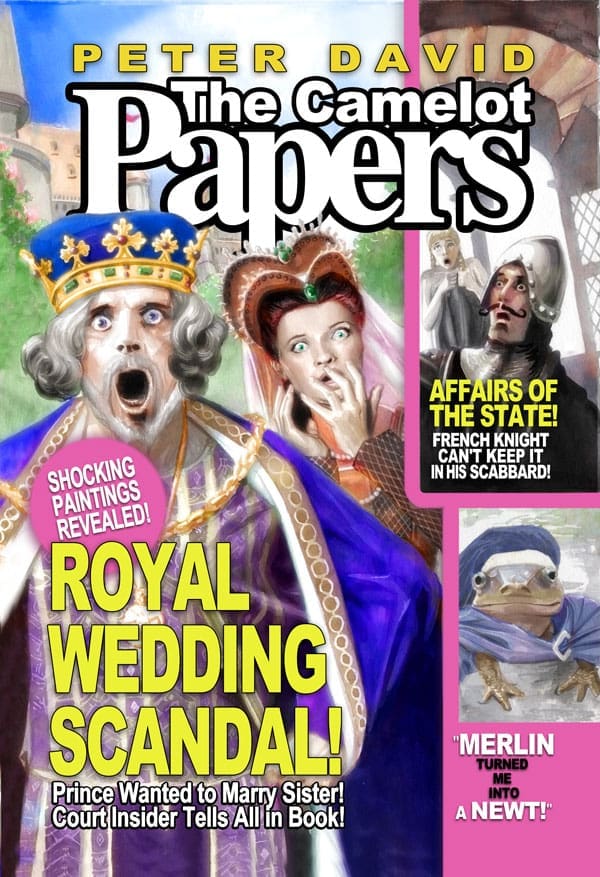
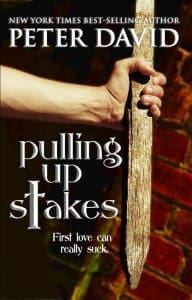
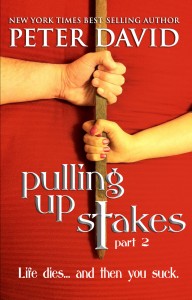
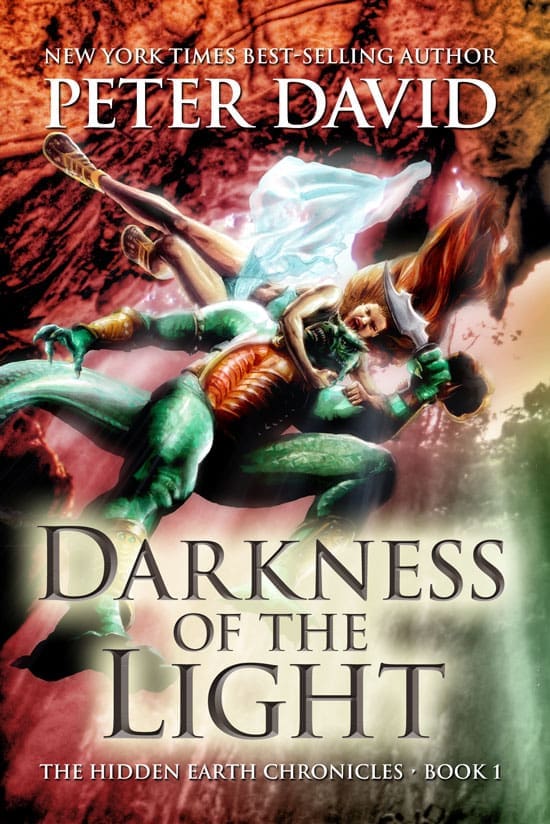
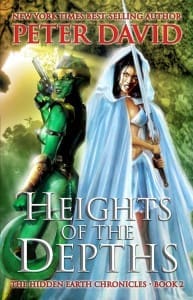
I’m guessing this was Todd? Or Rob?
Interesting. And appropriate for the time you wrote it in. I would argue today, however, that the pendulum has swung back the other way, in that it is the writer that sells the books. In some ways, it always was. It is true, though, that a GREAT story with HORRIBLE art will not sell well, as Captain Marvel proved at the end. It is also true that GREAT art and CRAP story will not sell, either, though it probably will sell a little better than the first would.
All told, I think that great art and great writing is the key. (Duh!) But great writing and decent art also sells, whereas decent writing and decent art, not so much.
Off topic, Peter, do you still use a Mac?
Posted by: Jason K at October 27, 2004 12:36 PM
I’m guessing this was Todd? Or Rob?
Actually, if I remember correctly from the collected BIDs, “Name Withheld” was guessed to be Eric Larsen, based on various bits of evidence.
Figure its McFarlane. Unless I’m wrong, I don’t think PAD had worked with, much less had a feud with, Liefeld.
Definitely Erik Larsen. it was an open secret for quite a while, but i believe Larsen officially confirmed it in some form or another around 6-12 months after his “Name Withheld” letter started one of the biggest and messiest comics debates of the decade. ah, those were the days….
Ah, the Chalker clan. Best villains… ever?
I bought the “Multiple Problems” issue of X-Factor for 50 cents today. Guido’s “geecee” rant was awesome. Why, oh why, did Scott Lobdell have to take over this book?
For some reason, on the Bullpen’s “Coolometer” in this issue, Serial Killers are higher up than Old Westerns, Arena Football, and Hipsterism. But not as cool as Dirt Roads. Go figure.
I’m glad it wasn’t Steve Rude ….
actually I think I had met Mr McFarlane when he was in college…. when did he become a villian?
Boy, does this column bring back memories for me! When the whole
Well, I suppose it could be Eric Larsen, but it sure as heck sounds like Todd McFarlane and Spider-Man. That’s the only title I can think of where it was created specifically for Todd to write and draw and he was king of the pin-up pages and it sold a bagillion copies.
Man, that was actually makinng me mad becasue I write, and I know there’s people out there who actaully feel that way and not just about comics.
it was also upsetting me becasue I’m a Liefeld fan—it’s a disease, I’m taking medication for it. 😀
Oddly enough, it seems like most of today’s comics are nothing but “people standing around ans talking”. Personally, I like a balance between plot, action and character, instead of too much of one or the other… but to each his own.
“actually I think I had met Mr McFarlane when he was in college…. when did he become a villian?”
Probably when he turned his roommate into a CIA assassin, then killed him and sent him to Hëll (and brought him back…).
Turns out Al’s a pretty nice guy, and much thinner than one would expect a Hellspawn to be. He usually holds out one of the ComicCon promo items for my wife, ever since the year they were throwing hats from the booth and she got trampled.
Well, I suppose it could be Eric Larsen, but it sure as heck sounds like Todd McFarlane and Spider-Man.
The “Name Withheld” who wrote the letter to CBG that kicked this off was Erik Larsen (to all evidence); the column itself is a more general treatment of the artists-who-thought-they-could-write of the time, including McFarlane. (IIRC this predates the founding of Image, though not by much–I couldn’t find a date in a cursory Google search–so I don’t know if Liefeld was an intended target.)
In retrospect, it was pretty obvious that “Name Withheld” was Larsen; I can’t imagine anyone else who would have put Shrapnel on a list of great artist-created characters…
(You can read a copy of the letter at http://members.tripod.com/fantom_dragonfan/namewh.html)
It’s an amalgam of the Image guys. This part almost certainly refers to the Jim Lee/Chris Claremont situation:
VIC: You must have felt it liberating when the writer was fired, or quit–reports still differ–and you took over the series yourself.
RANDY: Well, it was a while in coming, but it was inevitable. I don’t mean to badmouth Buck, but, for example–he’d write pages of people just standing there and talking, y’know? Just talking. Now that’s not what the fans want to see. It’s certainly not what I want to draw. So I’d try to give it visual kick by turning those boring, chatty scenes into interesting pin-up pages. Or I’d stick in a fight scene. And Buck would crab about the pacing being screwed up, saying it’s not the story he wrote. And he’d complain to the editor, and the editor, he knows what side his bread is buttered on, y’know?
Among artists who hate writers: John Kricfalusi. He thinks that artists should learn how to draw (read: Animate) before writing cartoons. You can’t imagine how relieved I was when I read a BID column saying that wasn’t necessary….
Among artists who hate writers: John Kricfalusi. He thinks that artists should learn how to draw (read: Animate) before writing cartoons. You can’t imagine how relieved I was when I read a BID column saying that wasn’t necessary….
The difference being that with the stuff John K does, Ren and Stimpy, Ripping Friends, George Liquor, etc. are all highly visual comedies. While I disagree that one should have know how to draw before writing a cartoon, but if they can’t draw or animate they should at least have at least a year of film school. You have to be able to visualize exactly how the cartoon will play out and make sure it’s funny. With conventional film you can spending a few thousand dollars more and do another take pretty easily. You screw one thing up in animation and it takes forever to fix and is expensive.
And if you take a look at most cartoons made from about 1970-1990, you realize most of them weren’t that great. Granted it was all either toy based programming, animated remakes of old shows, or the cause of some of the Hanna Barbera stuff, either a little stiff or a little too loose looking. Sometimes in same cartoon. Filmation was even worse. They got the people who either refused to play by H and B’s rules (John K.) or the people desperate to be animators who literally traced cells from older and better cartoons. Star Trek: The Animated Series was horrid. It is still better than Enterprise. There are rare gems from the period but much of it was just dreck. The Simpsons, Ren and Stimpy, Animaniacs, and few other started a rival in animation from which, sadly, it is already starting to slip back from to some extent.
I’m still trying to wrap my mind on what the executives who approved Gilligan’s Planet were thinking.
Jess Willey, who was originally distressed when caitians and triexians showed up in New Frontier but realized that if ‘Time Trap’ was fully canon as the Okudas and Ira Steven Behr would have us believe then M’ress and Arex must be too…
This part almost certainly refers to the Jim Lee/Chris Claremont situation
What situation was that? Did Jim Lee actually do this?
That’s what I heard. Jim Lee was given deference over Claremont, so Claremont left.
What may be less known is that Rob Liefeld rewrote Louise Simonson’s plots on X-Factor, and would turn in the pages out of sequence to hide the fact, making it difficult to script. If Peter was privy to this fact, it’s possible that this was also part of the basis for the above column.
As for Name Withheld, yes, it was Erik Larsen, as he admitted it in the back of an issue of Savage Dragon, in which he printed Peter
Doug Atkinson: …I couldn’t find a date in a cursory Google search
Luigi Novi: The column appeared in the CBG dated Oct. 18th, 1991.
And btw, in going through the book collecting Peter’s BID columns, and am reminded that one of the bits of “evidence” was the Splitting Image book that indicated that Larsen was Name Withheld.
But just out of curiosity, Zylly, what were these bits of evidence? How was this known to be Erik?
Two that I can remember were the aforementioned reference to Shrapnel among artist-created characters (not a certainty by itself, but not many other people would remember that Larsen created Shrapnel and even fewer would care); also, during the David/McFarlane debate, when PAD made some reference to the letter, Larsen gave him the finger. (The editors of CBG also denied that it was by Liefeld or McFarlane when asked in the letter column.)